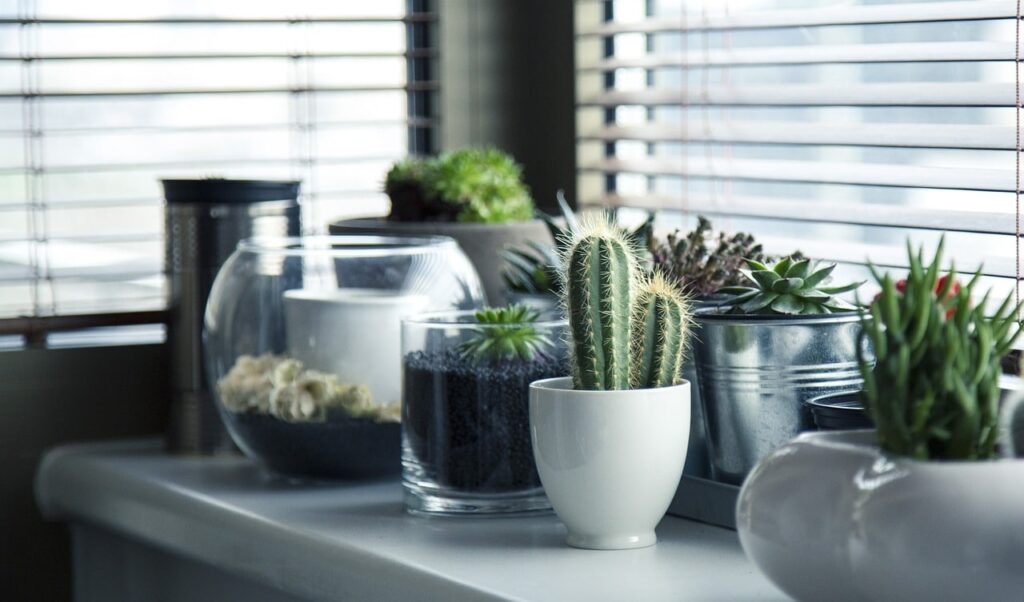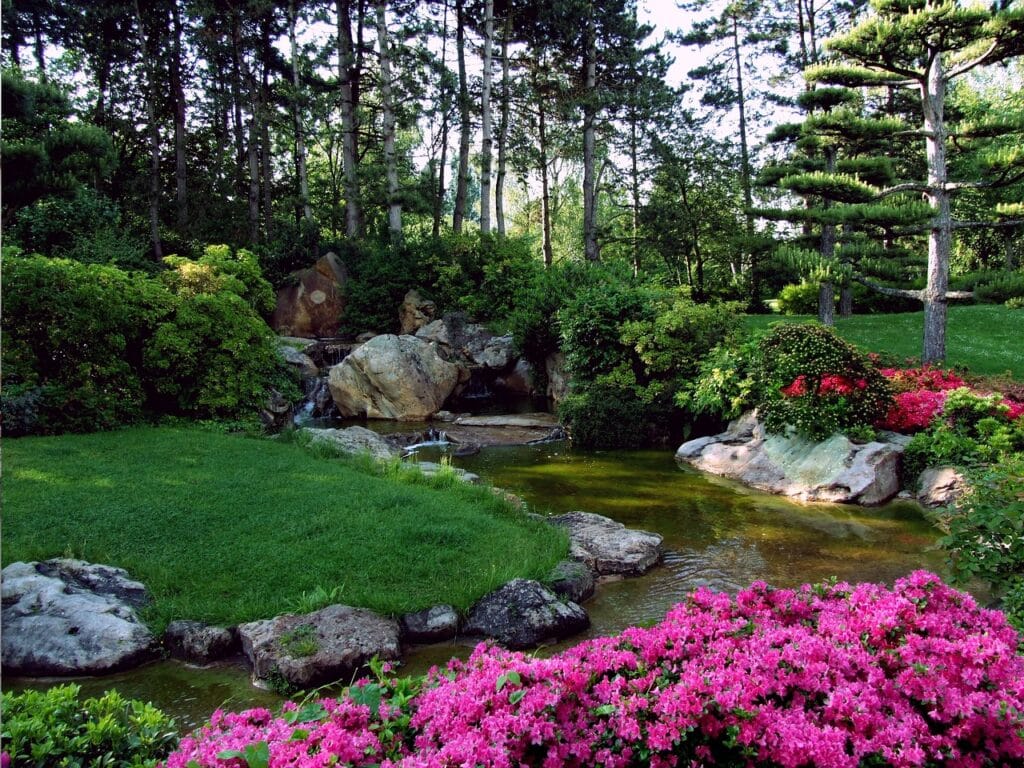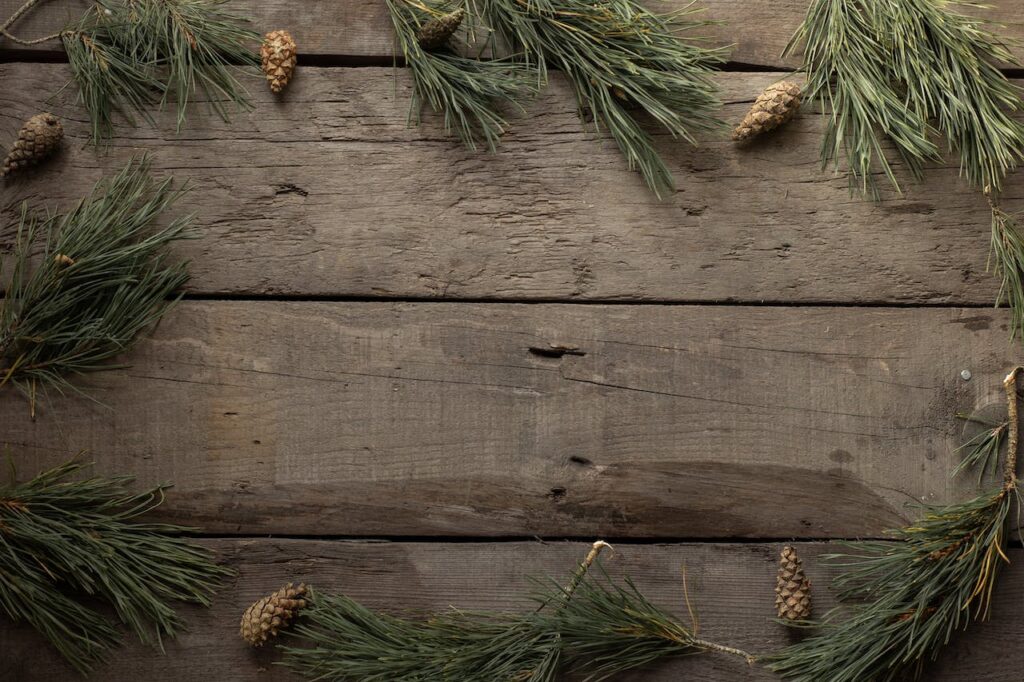Discover safe and feline-friendly indoor plants cats can eat without harm. Enhance your cat’s well-being and provide them with a natural source of enjoyment and digestion support with these non-toxic indoor greens.
If you’re a cat owner who loves houseplants just as much as your feline friend, the challenge comes in finding plants that are both cat-friendly and aesthetically pleasing. You don’t have to sacrifice your love for greenery just to keep your cat safe. In this article, discover a range of indoor plants cats can eat. They not only add natural beauty to your home but are also safe for your curious cat to nibble on without any harm.
From the striking spider plant to the delicate Boston fern, there’s a wide variety of catsafe indoor plants that will keep both you and your furry friend happy and content.
Safe indoor plants cats can eat
Having indoor plants not only brings a touch of nature into your home but can also provide numerous benefits for both you and your furry friend. However, when it comes to cats, not all indoor plants are safe for them to be around. That’s why it is important to choose cat-friendly indoor plants that are non-toxic or have minimal toxicity. In this article, we will explore the benefits of indoor plants for cats, provide a list of cat-safe indoor plants, discuss safe alternatives to popular plants, and give you tips on creating a cat-friendly indoor garden.
Benefits of indoor plants for cats
Indoor plants offer several advantages for cats, beyond just being aesthetically pleasing. They can help improve air quality by filtering out toxins, releasing oxygen, and increasing humidity levels. This can be particularly beneficial for cats as they are more sensitive to airborne pollutants than humans. Additionally, plants provide cats with a sense of stimulation and enrichment, which can help prevent boredom and destructive behaviors. Having plants indoors also mimics a natural environment, creating a calming and stress-reducing atmosphere for your feline friend.

Choosing indoor plants cats can eat
When it comes to selecting indoor plants that are safe for your cat, there are a few key considerations. First and foremost, it is crucial to choose plants that are non-toxic or have minimal toxicity.
Some common indoor plants can cause various health issues if ingested by cats, ranging from mild gastrointestinal disturbances to more severe symptoms. To ensure the safety of your furry companion, let’s explore a list of indoor plants cats can eat that you can confidently include in your home.
Spider Plant
Spider plants (Chlorophytum comosum) are a popular choice for indoor gardening and are also safe for cats. These plants have long, arching leaves with white stripes, making them visually appealing. Spider plants are known to help purify the air and are relatively easy to care for, making them a perfect choice for both novice and experienced plant owners.
Areca Palm
The Areca Palm (Dypsis lutescens) is a beautiful addition to your indoor garden. It is also safe for your cat. It features feathery, arching fronds that can make any space feel like a tropical oasis. As a bonus, the Areca Palm is known for its air-purifying properties, helping to remove toxins from the environment.
Boston Fern
The Boston Fern (Nephrolepis exaltata) is a luscious and vibrant plant that can add elegance to your home. It has arching fronds with delicate, feathery leaves, creating a visually appealing display. Boston Ferns are safe for cats and can even help improve humidity levels. They can be beneficial, especially during dry winter months.
Bamboo Palm
Bamboo Palms (Chamaedorea seifrizii) are another great choice for a cat-friendly indoor plant. They feature slender, bamboo-like stems with dense foliage, adding a tropical feel to any space. Bamboo Palms are non-toxic to cats and can thrive in both bright and low-light conditions, making them quite versatile.
Plants with minimal toxicity
If you have your heart set on a particular indoor plant that may have minimal toxicity. There are options available that can still be included in your cat-friendly environment. Although these plants may cause mild gastrointestinal upset if ingested by cats. They are generally considered safe as long as your feline friend doesn’t overindulge.
African Violet
African Violets (Saintpaulia) are beautiful flowering plants that come in a variety of colors. They add a pop of brightness to any indoor space. While not entirely non-toxic, African Violets typically cause only mild irritation if ingested by cats. However, it’s always a good idea to keep a close eye on your cat’s behavior around these plants.
Polka Dot Plant
The Polka Dot Plant (Hypoestes phyllostachya) is known for its attractive and colorful foliage, featuring vibrant spots or speckles. Although it may cause mild gastrointestinal upset if ingested by cats, it is generally considered safe when consumed in small quantities. To be safe, it’s best to discourage your cat from devouring this plant as a snack.
Money Plant
Money Plants (Epipremnum aureum) are popular for their heart-shaped leaves and their ability to thrive in a variety of light conditions. While they can cause mild stomach upset in cats, they are generally safe as long as your furry friend doesn’t munch on them excessively.
Prayer Plant
Prayer Plants (Maranta leuconeura) are known for their unique foliage patterns, with intricately designed leaves that fold upwards at night. While these plants may cause mild digestive issues if ingested, they are generally safe for cats when enjoyed in moderation. Remember to provide alternative options for your cat to avoid overindulgence.
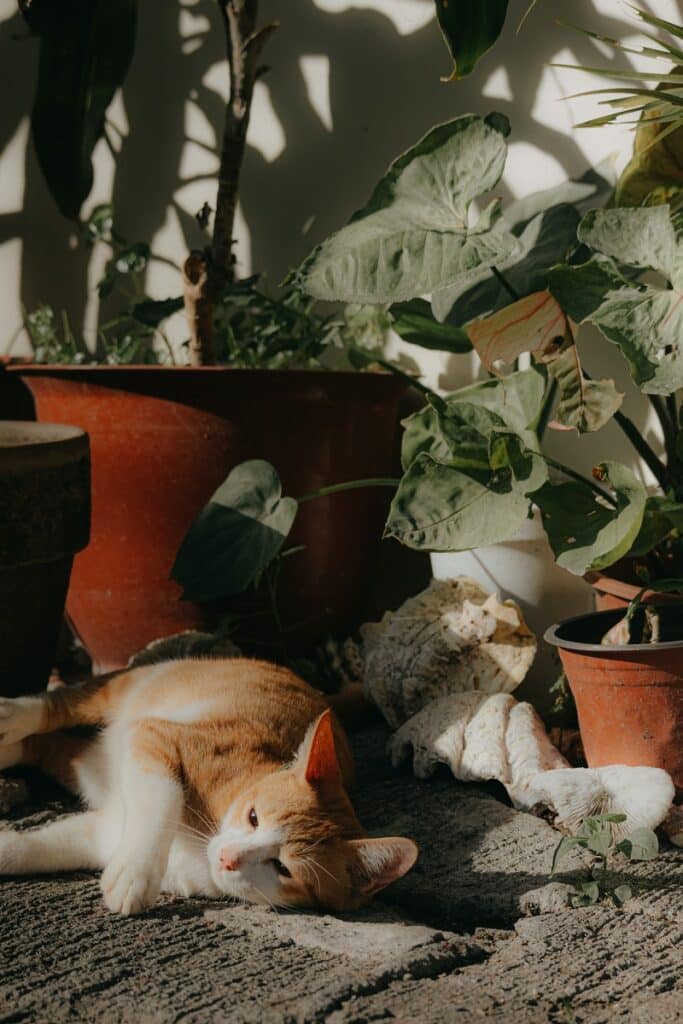
Safe alternatives to popular plants
Certain plants that are popular among plant enthusiasts may pose a risk to cats due to their toxicity. However, there are safe options of indoor plants cats can eat that you can consider to achieve a similar aesthetic appeal in your indoor garden environment without compromising your cat’s safety.
Alternatives to Lilies
Lilies are highly toxic to cats, especially the Easter Lily and Tiger Lily varieties. Instead of including these plants in your indoor garden, you can opt for cat-safe alternatives like the African Violet or the Peace Lily. These alternatives provide a similar elegance and beauty without posing a threat to your furry companion.
Alternatives to Aloe Vera
Aloe Vera plants may have various health benefits for humans, but they can be toxic to cats if ingested. Instead of having an Aloe Vera plant in your home, you can choose cat-friendly herbs like Catnip or Mint. These herbs not only provide a safe and stimulating environment for your cat but also have their own unique properties that may be interesting for you to explore.
Alternatives to Peace Lily
While Peace Lilies are visually stunning, they are considered toxic to cats if eaten in large quantities. As mentioned earlier, the African Violet serves as a safe alternative that can give you a similar splash of color and elegance without compromising your cat’s health and wellbeing.
How to create a cat-friendly indoor garden
Now that you have a better understanding of cat-friendly indoor plants, let’s explore how you can create a space that is both appealing to your feline friend and safe for them to explore. Find the indoor plants cats can eat and add them into your garden.
Consider your cat’s behavior
To create a cat-friendly indoor garden, it’s important to consider your cat’s behavior and preferences. Some cats may be more inclined to chew on plants, while others may simply enjoy rubbing against them. Understanding your cat’s behavior will help you choose plants and design your indoor garden accordingly. If your cat has a habit of munching on plants, it’s best to focus on non-toxic options and provide plenty of cat grass to satisfy their grazing instincts.
Placement of plants
When placing your indoor plants, consider the accessibility for your cat. Avoid placing plants on high shelves or surfaces where your cat can easily knock them over. Opt for sturdy pots and make sure the plants are well-rooted to prevent toppling accidents. Additionally, keep toxic plants out of reach or choose hanging varieties that can be placed safely out of your cat’s reach.
Provide cat grass
Cat grass is a great addition to your indoor garden that can help satisfy your cat’s natural instinct to chew on grass. Growing cat grass in a designated area can divert your cat’s attention from potentially harmful plants and provide them with a safe and enjoyable alternative. There are various cat grass kits available that make it easy to grow and maintain a continuous supply of fresh grass for your furry friend.

Common signs of plant toxicity in cats
While we strive to create a safe and cat-friendly indoor garden, it’s important to be aware of the signs of plant toxicity in cats. If you suspect that your cat may have ingested a toxic plant, keep an eye out for the following symptoms:
Vomiting
One of the most common signs of plant toxicity in cats is vomiting. If your cat begins to vomit shortly after being exposed to a particular plant, it may indicate a digestive issue caused by the ingested plant.
Diarrhea
Diarrhea is another indicator of plant toxicity in cats. If your cat experiences a sudden onset of loose stools or an increased frequency of bowel movements after being around a specific plant, it is advisable to consult your veterinarian.
Lethargy
If your normally active and playful cat becomes unusually lethargic and lacks energy, it may be a sign of plant toxicity. Cats may experience a decline in their overall wellbeing and exhibit a lack of interest in their surroundings.
Breathing difficulties
In severe cases of plant toxicity, cats may experience respiratory distress breathing. This can be a life-threatening situation and requires immediate medical attention.
Precautions and tips
To ensure the safety of your cat and maintain a healthy indoor garden environment, here are some precautions and tips to keep in mind:
Consult your vet
Before introducing any new plants into your home, it is always a good idea to consult with your veterinarian. They can provide valuable advice on plant toxicity, suggest cat-safe options, and address any concerns you may have regarding your cat’s health.
Monitor your cat’s behavior
Regularly observe your cat’s behavior around the plants in your indoor garden. If you notice any unusual chewing or nibbling, it’s important to discourage them and ensure there are safe alternatives available. Keep an eye on your cat’s overall wellbeing and consult your vet if you notice any signs of plant toxicity.
Avoid using chemical fertilizers
When caring for your indoor plants, opt for organic and chemical-free fertilizers. Chemical fertilizers can be toxic to cats if they come in contact with them or ingest them while grooming. Choose natural alternatives to nourish your plants and keep your furry friend safe.
Research plant toxicity
Always research the potential toxicity of any new plant you intend to bring into your home. There are many resources available online that provide comprehensive lists of toxic and non-toxic plants for cats. By doing your due diligence, you can make informed choices and create a safe environment for your feline friend.
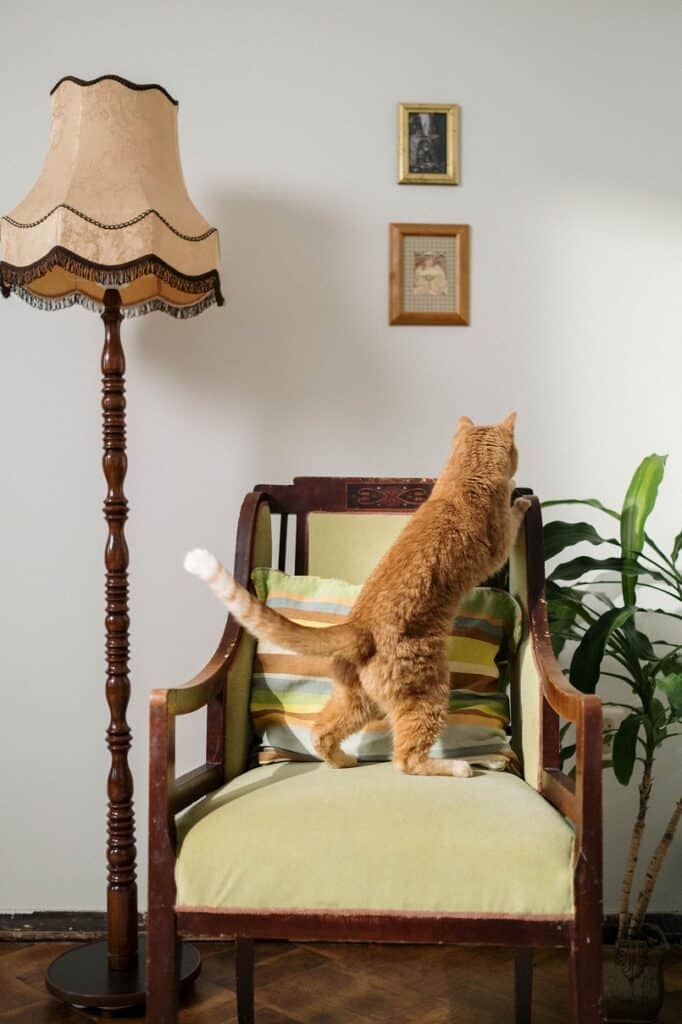
Cat-friendly herbs for indoor gardening
In addition to beautiful indoor plants, you can also consider growing cat-friendly herbs as part of your indoor gardening experience. These herbs not only provide safe and stimulating options for your cat but can also be used to enhance your culinary work.
Catnip
Catnip (Nepeta cataria) is a well-known favorite among cats. It has a scent that can be highly stimulating for cats, often resulting in playful behavior and excitement. Growing catnip indoors can provide your cat with endless entertainment, and you can even use it as a training tool or reward.
Mint
Mint (Mentha) is another herb that cats enjoy. Its fragrant leaves have a refreshing smell, and you can use them to make herbal teas or garnish various dishes. Having a pot of mint in your indoor garden will provide a safe option for your cat. It also offer a delightful aroma in your home.
Basil
Basil (Ocimum basilicum) is a versatile herb. People use it for culinary purposes and aromatic properties. Cats usually attract to its unique scent. So, having a pot of basil in your indoor garden can give them a stimulating plant to explore. It also adds flavor to your dishes.
Parsley
Parsley (Petroselinum crispum) is a popular herb that is both pleasing to the eye and the palate. Cats are generally attracted to its smell, and growing parsley indoors can provide them an interesting plant to investigate. As a bonus, you can also use fresh parsley in your cooking.
Great additions of indoor plants cats can eat
In addition to the previously mentioned cat-friendly plants and herbs. Here are a few more great additions to consider for your indoor garden:
Cat Grass
Cat grass (Dactylis glomerata) is a type of grass that is specifically for cats to consume. Its valuable nutrition and can help with digestion. Growing cat grass in a designated area of your indoor garden will satisfy your cat’s natural instinct to chew on grass. But also provide them with essential nutrients.
Spider Plant
Spider plants (Chlorophytum comosum) deserve another mention as they are not only safe but also highly engaging for cats. The dangling stems with cascading plantlets can make for an entertaining and interactive experience for your feline friend.
Valerian
Valerian (Valeriana officinalis) is a herb that is known for its calming properties in humans. However, it has the opposite effect on cats and can be highly stimulating. Growing valerian in your indoor garden can give your cat a new and exciting scent to explore.
Lemon Balm
Lemon Balm (Melissa officinalis) is a herb that produces a lemony scent, which many cats find intriguing. Having a pot of lemon balm in your cat-friendly garden can provide both you and your cat with a refreshing aroma and a safe plant to enjoy.
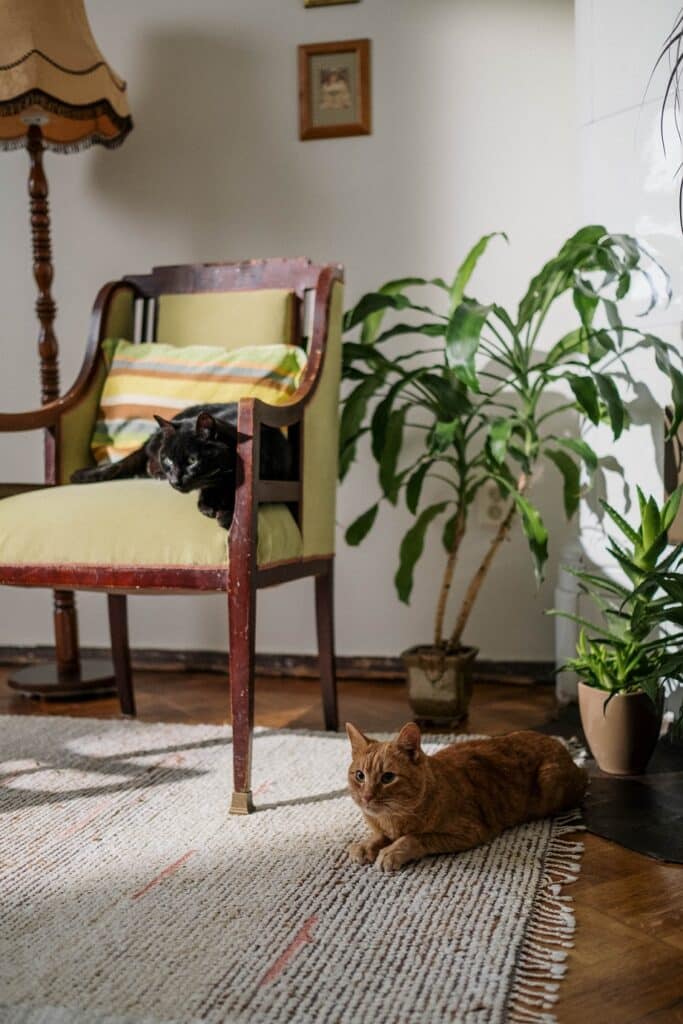
Conclusion
Creating a cat-friendly indoor garden not only adds beauty and vitality to your home but also ensures the safety and well-being of your feline companion. By selecting cat-safe indoor plants, considering your cat’s behavior, and providing stimulating alternatives, you can create a space that enriches your cat’s environment while maintaining their health. Remember to research plant toxicity, monitor your cat’s behavior, and consult your veterinarian for any specific concerns.
With careful consideration and some green-thumb creativity, you can create a harmonious and indoor plants cats can eat so that both you and your furry friend will enjoy.

